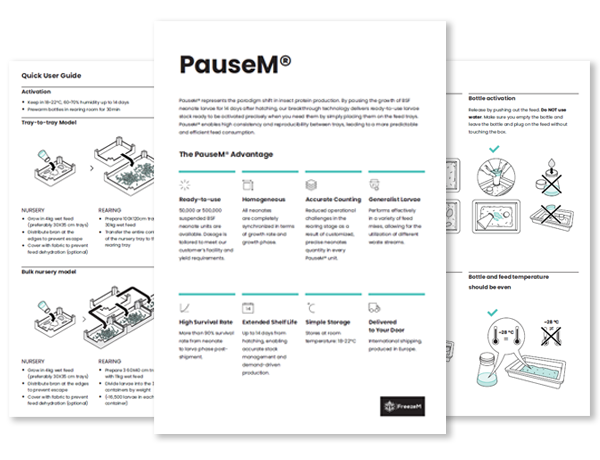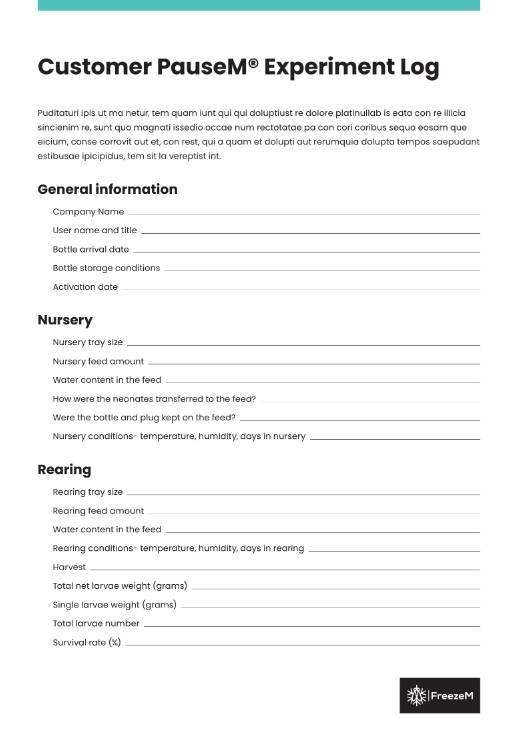Release Protocol Video
FAQs
Receiving Your Shipment
Where should I keep the PauseM® packages after receiving them?
Can I keep the PauseM® packages in the shipping box?
Can I keep the PauseM® packages at room temperature?
What is the expiration date of my PauseM® packages?
The bottles are best to be used up to 21 days from their packing day, which is usually a few days before your package is shipped. You are welcome to contact us to find out the exact date.
What is the weight of the neonates seeded in each PauseM® unit?
I see the neonates active in the package. Is this normal
The plug of my PauseM® package turned brown. Is it OK?
Rearing Phase
How do I know how many rearing trays to use for one 50K nursery tray?
How much feed should I use for the rearing stage?
What is the best way to divide the nursery tray into rearing trays?
I have a tray-to-tray setup. Should I transfer the frass with the larvae to the rearing tray?
Yes. The frass contains the larvae microbiome and other secreted molecules that are beneficial for larvae growth. The frass can also absorb free water in the feed and improve feed texture.
The larvae didn’t reach the final size that I was aiming for. What can I do?
Nursury Phase
Why do I need to pre-warm the bottles to the nursery room temperature?
Do I need to push the gel out of the PauseM® bottle?
What should I do if I have free water in the feed?
To prevent the neonates from drowning, the gel should be unpacked on a dry area made from bran or any other dry substrate. The empty bottle and plug should be placed on the dry area as well. Please refer to our “Do’s and Dont’s” visual aid and YouTube video for more information.
I have a unique mixture of organic waste to feed the larvae. Will the larvae eat it
How long should the bottle and plug be kept in the nursery tray?
What are the recommendations for growth room conditions?
How do I know how much feed to use for the nursery stage?
How can I avoid neonate escape from the nursery tray?
Wheat bran (or any other dry material) can be spread on the edges of the tray to avoid neonate escape. Please refer to our “Do’s and Don’ts” visual aid and YouTube video for more information.
How can I avoid feed dehydration in the nursery tray?
Is there a heat limit in the larvae trays?
I have mold formation on the feed in my nursery trays. Is that normal?
How do I know the nursery stage is finished?
I would like to sample and measure my larvae at the end of the nursery. What is the best way to do that?
I see size variability in larvae size at the end of the nursery. Is this normal?
Yes. Larvae can vary in size after nursery, especially following long suspension times. Larvae size will even out after rearing.

